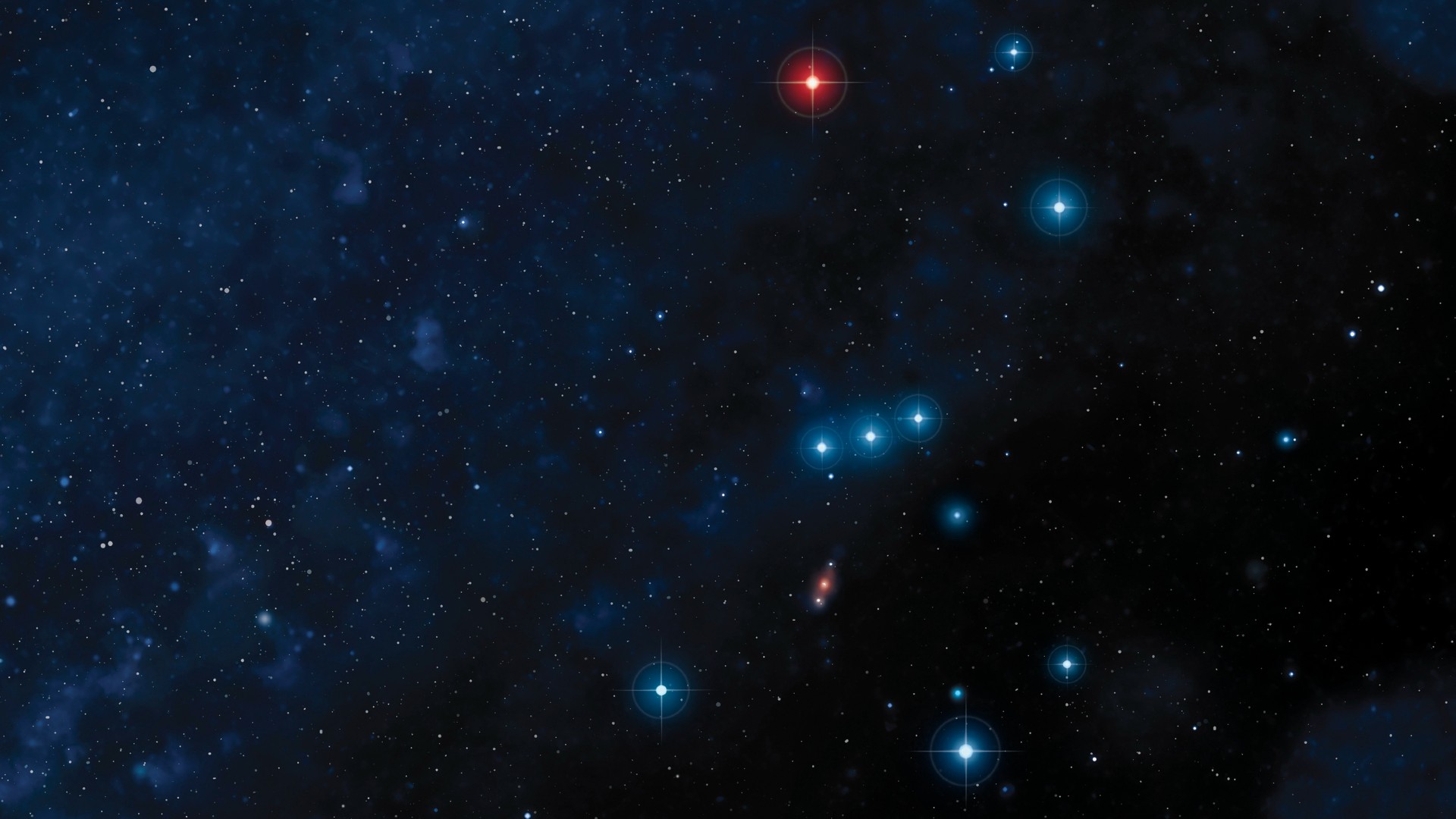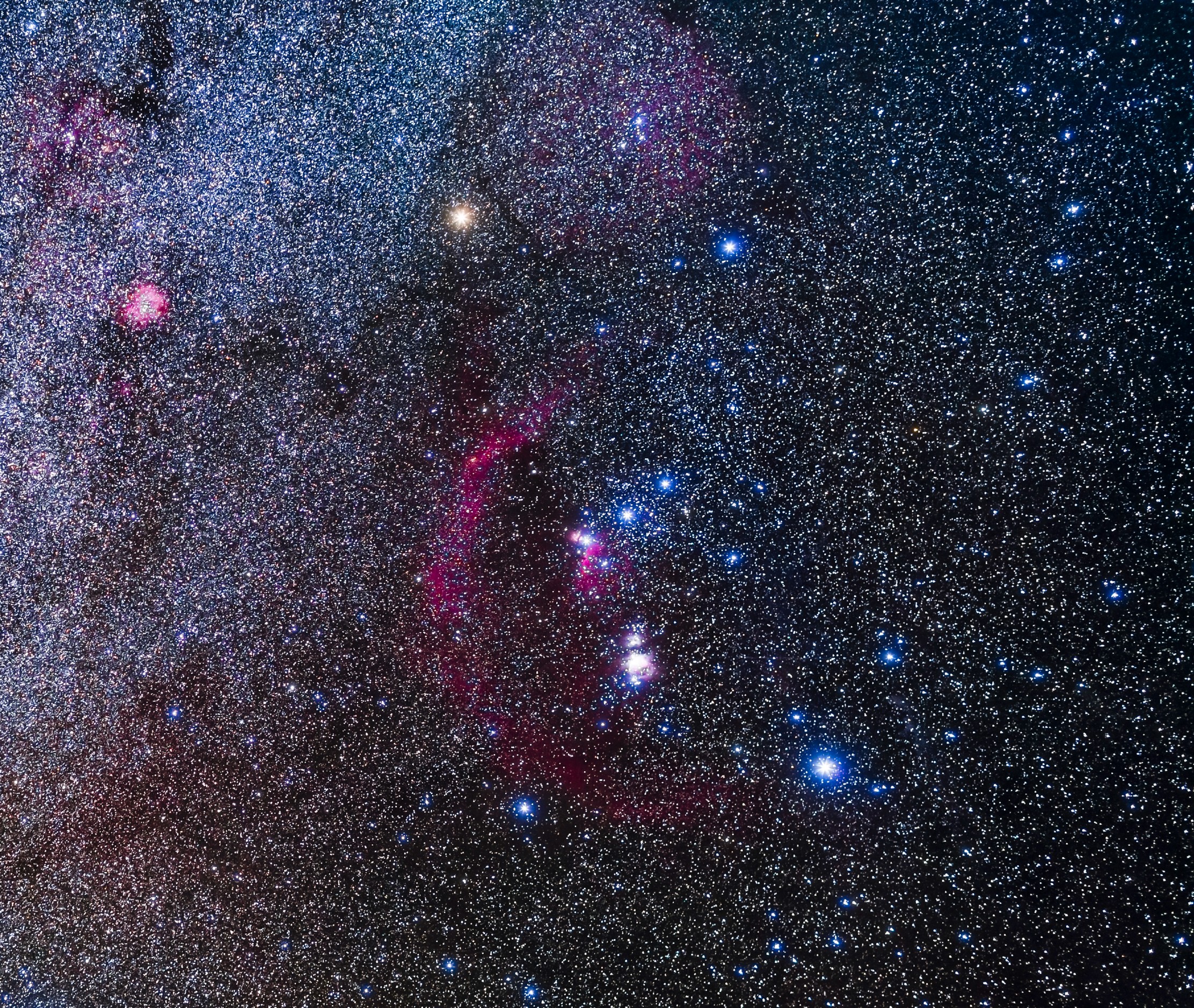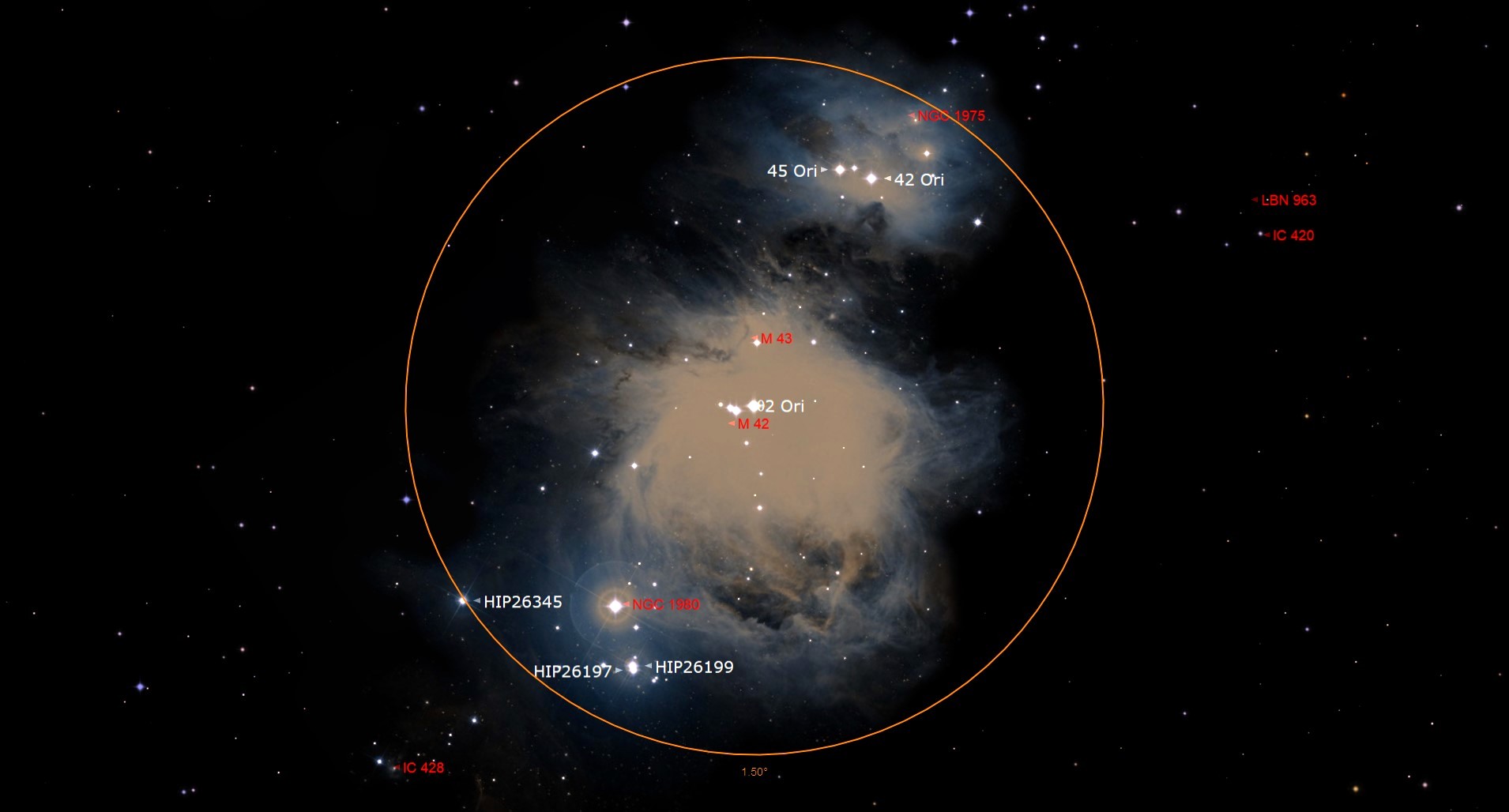Orion constellation goes from hunter to hunted in the March night sky

The constellation of Orion represents the hunter for most of the year, but in mid-March, this prominent collection of stars becomes hunted by skywatchers.
The stars of Orion, named after the pinnacle of human excellence in hunting in Homer's epic Greek poem "The Odyssey," can be found shining brightly in the southwestern sky during the evening throughout March. The Orion nebula, the nearest star-forming region to Earth, can be easily found within the constellation and can even be made out with binoculars in reasonably dark skies.
To find Orion, look high in the southern or southwestern skies just after sunset as the stars appear. Throughout the following months, the constellation will begin moving to the west.
Related: Orion Constellation: Facts, location and stars of the hunter

Looking for a telescope to see the Orion nebula? We recommend the Celestron Astro Fi 102 as the top pick in our best beginner's telescope guide.
The constellation of Orion is made up of several striking features including the Sword of Orion which descends from Orion's three-starred belt. Both Orion's Sword and Orion's belt are asterisms, loose unofficial patterns of stars that like constellations seem to take the shape of familiar or mythical objects.
The stars that make up Orion's Belt, also known as the Three Kings or the Three Sisters, are the central star Alnilam, a bright supergiant, and Alnitak and Mintaka — both of which are actually star systems composed of three and five stars, respectively.
Within Orion's Sword are the stars 42 Orionis and Theta Orionis, the multiple star system Iota Orionis and the bright nebula Messier 42, also known as the Orion Nebula or NGC 1976.
Get the Space.com Newsletter
Breaking space news, the latest updates on rocket launches, skywatching events and more!
With binoculars, this nebula appears as a fuzzy grayish blob. But the observing power of a even a medium-sized telescope is sufficient to resolve the veils of gas and darker lanes of dust that make up Messier 42. This material forms the building blocks for the new stars being born in this region.

At the heart of Messier 42 and located around 1,600 light-years from Earth is the Trapezium Cluster or Theta-1 Orionis, a large open cluster of young stars that can be resolved with 5-inch telescopes and larger. The young stars in the Trapezium blast out X-rays and cause the surrounding nebula to glow.
According to MessierObjects.com, the Trapezium Cluster is named after the loose collection of four massive stars that form a trapezoid-shaped asterism at its heart. These stars are designated Theta-1 Orionis A, B, C and D, with Theta-1 Orionis C being the brightest of these at a visual magnitude of 5.13. The star is an incredible 251,000 times more luminous than the sun, making it one of the most luminous stars ever discovered.

Stars Theta-1 Orionis A and B form a binary pairing with the stars eclipsing each other as seen from Earth. Theta-1 Orionis B also happens to be the faintest star in the trapezoid-like asterism.
The Trapezium Cluster is also believed to play host to a multitude of so-called "failed stars" or brown dwarfs. These are bodies with masses greater than giant planets like Jupiter, but less than stars. This lack of mass means that brown dwarfs aren't able to kick-start the nuclear fusion that defines stars. As a result, they are dim objects meaning spotting them with even a large backyard telescope is unfeasible.
Something else skywatchers won't be able to see in the Trapezium Cluster even when Orion is visible this March is the intermediate-mass black hole with a mass 100 times that of the sun that scientists proposed in 2012 exists in the cluster.
If you're hoping to catch a look at the constellation of Orion and its stellar occupants, our guides for the best telescopes and best binoculars are a great place to start.
If you're looking to snap photos of Orion or the night sky in general, check out our guide on how to photograph the moon, as well as our best cameras for astrophotography and best lenses for astrophotography.
Editor's Note: If you snap Orion, its stars or the Orion nebula and would like to share it with Space.com's readers, send your photo(s), comments, and your name and location to spacephotos@space.com.
Follow us @Spacedotcom, or on Facebook and Instagram.
Join our Space Forums to keep talking space on the latest missions, night sky and more! And if you have a news tip, correction or comment, let us know at: community@space.com.

Robert Lea is a science journalist in the U.K. whose articles have been published in Physics World, New Scientist, Astronomy Magazine, All About Space, Newsweek and ZME Science. He also writes about science communication for Elsevier and the European Journal of Physics. Rob holds a bachelor of science degree in physics and astronomy from the U.K.’s Open University. Follow him on Twitter @sciencef1rst.









